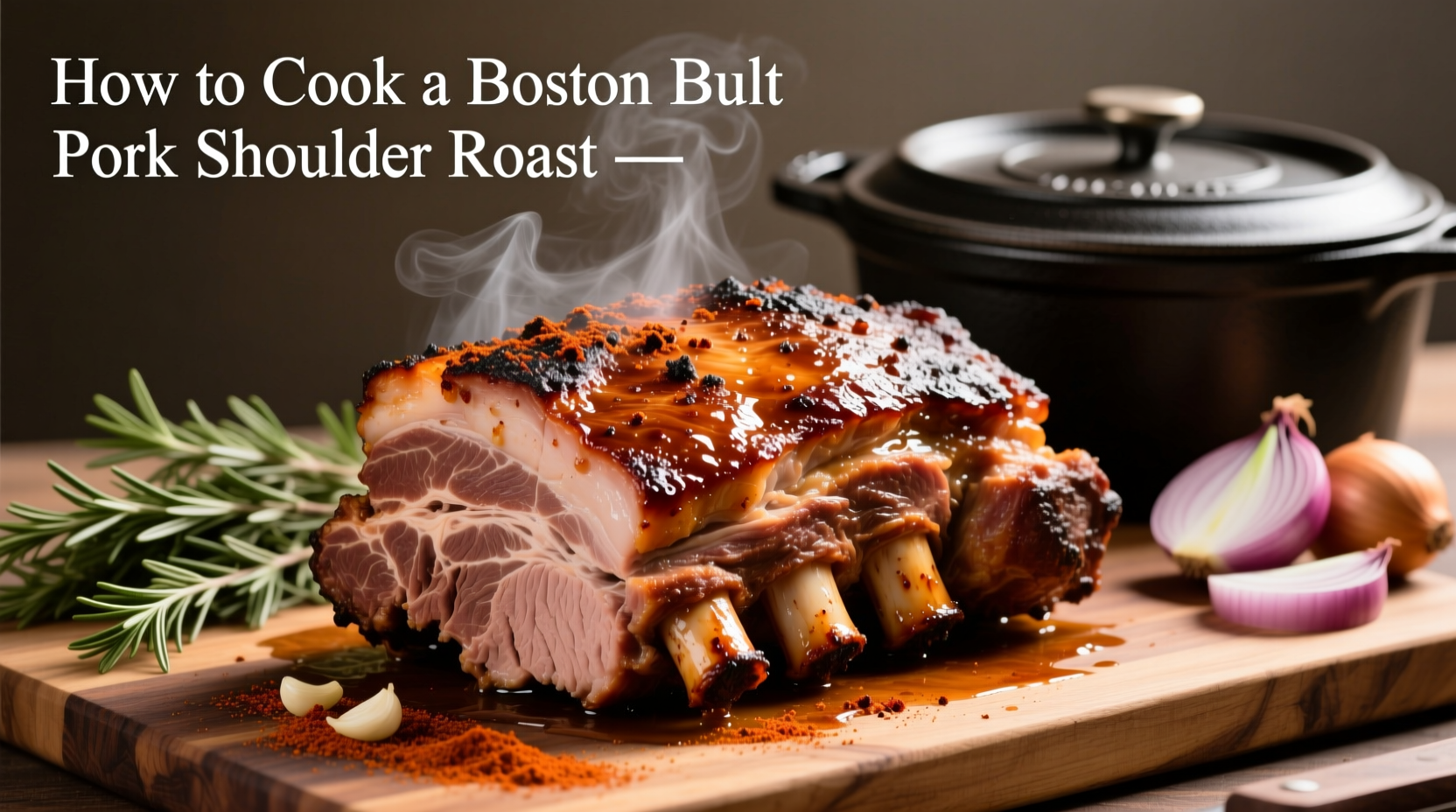Perfectly cook a Boston butt pork shoulder roast by seasoning generously, roasting at 275°F (135°C) for 1.5 hours per pound until internal temperature reaches 195-205°F (90-96°C), then resting 1-2 hours. This low-and-slow method transforms tough connective tissue into succulent, pull-apart tender meat ideal for sandwiches or carnitas.
Ever wondered why your Boston butt turns out dry or tough despite hours in the oven? The secret lies not just in cooking time, but in understanding the unique properties of this marbled cut. As a culinary professional who's tested hundreds of pork shoulder preparations, I've discovered precise temperature thresholds that make the difference between mediocre and mouthwatering results.
What Exactly Is Boston Butt?
Despite its name, Boston butt comes from the pig's upper shoulder, not the rear. This well-exercised cut contains abundant connective tissue and marbling that, when cooked properly, yields incredibly tender meat. The "Boston" reference dates to colonial times when butchers packed these cuts in barrels called "butts" for shipment from Boston.
| Cooking Method | Time Required | Best For |
|---|---|---|
| Oven Roasting | 8-12 hours | Crispy bark, traditional preparation |
| Slow Cooker | 10-14 hours | Hands-off cooking, guaranteed tenderness |
| Smoker | 12-16 hours | Authentic barbecue flavor |
Essential Equipment Checklist
You don't need specialty tools, but these make the process smoother:
- Heavy-duty roasting pan or Dutch oven (stainless steel or cast iron)
- Meat thermometer (instant-read and probe thermometer recommended)
- Butcher's twine for securing shape
- Aluminum foil or butcher paper for wrapping
Preparation: The Critical First Steps
Dry brine overnight for maximum flavor penetration: Rub 1 tablespoon kosher salt per 5 pounds of meat over entire surface. Refrigerate uncovered 8-12 hours. This simple step, recommended by the USDA Food Safety and Inspection Service, enhances both flavor and texture through protein modification.
Before cooking, bring meat to room temperature (1-2 hours). Pat completely dry - this crucial step ensures proper browning. Apply your rub, focusing on crevices where fat renders out during cooking.
Temperature Control: The Science of Tender Pork
Connective tissue (collagen) begins converting to gelatin at 160°F (71°C), but the complete transformation happens between 195-205°F (90-96°C). The USDA's Food Safety and Inspection Service confirms pork is safe at 145°F (63°C), but for Boston butt, you must exceed this temperature to achieve tenderness.
Monitor these critical temperature milestones:
- 160°F (71°C): Collagen conversion begins
- 190°F (88°C): Meat becomes sliceable
- 195-205°F (90-96°C): Optimal pull-apart tenderness
Avoiding Common Pitfalls
Many home cooks make these critical errors:
- Skipping the rest period: Cutting too soon releases precious juices. Resting 1-2 hours allows gelatin to reset
- High-heat cooking: Causes exterior to burn before interior tenderizes
- Ignoring stall phase: Between 150-170°F (66-77°C), evaporation cools the meat. Plan for this 2-4 hour plateau
Serving and Storage Guidelines
After resting, separate the crisp bark from the tender meat. Chop the bark finely and mix back into pulled pork for added texture. Store leftovers in cooking juices to maintain moisture. Properly stored in airtight containers, leftovers keep for 4 days refrigerated or 3 months frozen.
When to Choose Alternative Methods
While oven roasting delivers classic results, consider these alternatives based on your situation:
- Weeknight schedule: Use slow cooker method with reduced liquid (½ cup broth)
- Outdoor entertaining: Smoke at 225°F (107°C) for authentic barbecue flavor
- Texture preference: For crispier exterior, finish oven-roasted meat under broiler for 5 minutes











 浙公网安备
33010002000092号
浙公网安备
33010002000092号 浙B2-20120091-4
浙B2-20120091-4